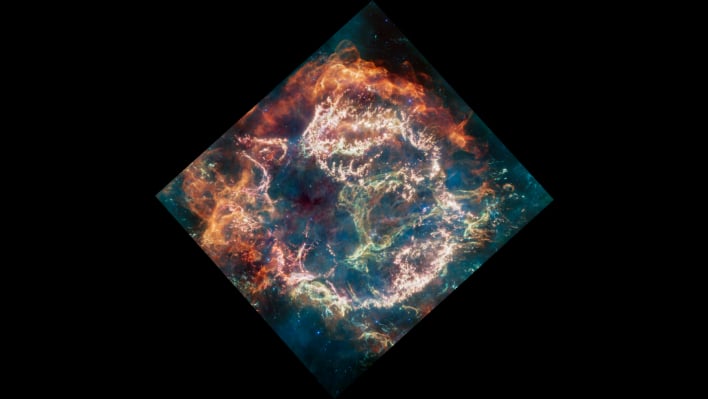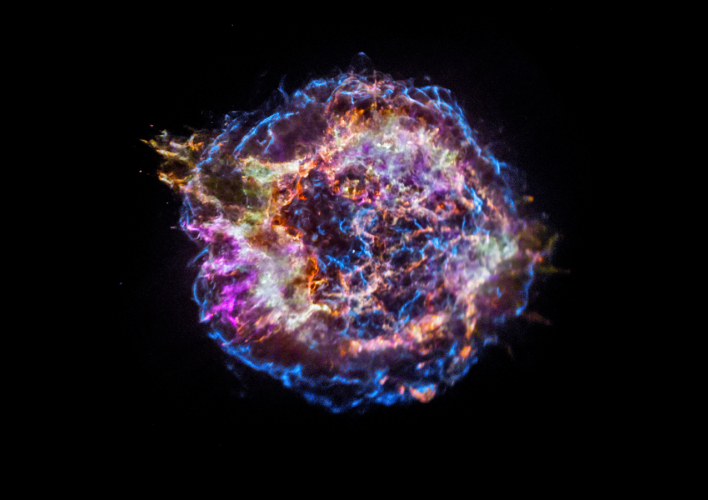NASA's Space Telescope Reveals Stunning Detail Of A Stellar Explosion 340 Years Ago

While the image from JWST is not the first to be taken of Cassiopeia A, the mid-infrared image does reveal details that have not been seen before, according to Tea Temim of Princeton University, and a co-investigator on the program. The prototypical supernova remnant has also been observed using NASA's Chandra X-ray Observatory. Those observations can be combined with the latest from JWST to give scientists "a more comprehensive understanding of the remnant."

JWST's image of Cas A provides researchers with a new perspective of the remnant "in which infrared light is translated into visible-light wavelengths."
"We're still trying to disentangle all these sources of emission," remarked Ilse De Looze of Ghent University in Belgium, and co-investigator on the program.
The team gave a nickname to a loop represented in green that extends across the right side of the central cavity. Milisavljevic said the team nicknamed it the Green Monster in honor of Fenway Park in Boston.
"By understanding the process of exploding stars, we're reading our own origin story," Milisavljevic explained. "I'm going to spend the rest of my career trying to understand what's in this data set."
In order to give some idea of just how big and far away that data set is, Cas A spans nearly 10 light-years and is located around 11,000 light-years away.

